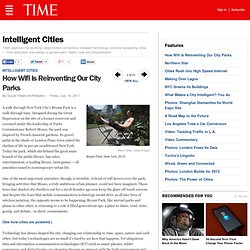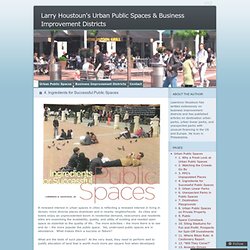

Geography of Kenya. Physical Features Located across the equator on the east of the African continent, the geography of Kenya is quite diverse.

Its bordering countries include Ethiopia to the north, Sudan to north-west, Somalia to east, Tanzania to south and Uganda to west. Kenya covers a total area of 582,650 sq km with land covering 569,250 sq km and water 13,400 sq km. Scale Rules. Printable Scale Rules 1:1 through 1:200 Metric. Need to print numbered tickets?

Design Tickets Free Online and Print on your Printer! Easy Step by Step Instructions. No Limits. Your iPad or Android Tablet is a valuable On-Site tool! Print DiagramsPrinting to Scale Help Lay your tablet on an angle to directly measure angles and automatically enter them into Roofing and Pitch Angle Calculator Apps. To fine tune Slider Controls, click to select and use ◄ ► (cursor) keyboard keys. If you've benefited from this free service, please consider a small donation to Blue Dragon Children's FoundationPlease help promote this site - Tell a Friendblocklayer.com Questions or Suggestions? Disclaimer | Privacy. Etd.lib.clemson.edu/documents/1306872294/Draper_clemson_0050M_11151.pdf.
Konza Techno City masterplan by SHoP Architects. Manhattan-based firm SHoP Architects has sent us a movie and more images illustrating its masterplan for Konza Techno City, a new "silicon" city 40 miles from Kenya's capital Nairobi (+ movie).

Above: entry plaza Work is already underway on the pavilion that forms part of the first phase of SHoP Architects' masterplan for Konza Techno City, a business and technology hub that's been dubbed Kenya's "silicon savannah", as we reported last week. Above: university campus The $14.5 billion project will transform an area of grassland into a city of 250,000 residents. The city is expected to generate up to 200,000 jobs by the time its final phase is completed in 2030. Above: business district The first phase, to be built over five years, will house 30,000 residents and be shaped like a row of "stitches" in the overall masterplan, the architects told Dezeen. Www.central2013.eu/fileadmin/user_upload/Downloads/outputlib/Urbspace_Guideline_for_makingSpace.pdf. Www.barrfoundation.org/files/Immigrant_Engagement_in_Public_Open_Space.pdf. Www.central2013.eu/fileadmin/user_upload/Downloads/outputlib/Urbspace_3.1.1._Analyses_of_common_problems.pdf.
Kenya begins construction of 'silicon' city Konza. 23 January 2013Last updated at 09:05 ET It will take 20 years to build Konza Technology City Kenya's president has launched a $14.5bn (£9.1bn) project to build a new city intended to be an IT business hub and dubbed "Africa's Silicon Savannah".
It will take 20 years to build Konza Technology City about 60km (37 miles) from the capital, Nairobi. Great Places in America: Public Spaces. Village Green, Bar Harbor, Maine- Designated area The Green is bounded by Main Street, Mount Desert Street, Kennebec Street, and Firefly Lane.

Summary The development of Acadia National Park, which provides a year-long scenic backdrop for Village Green visitors, was the impetus needed for changes undertaken by the Bar Harbor Village Improvement Association. Www.um.ase.ro/No12/2.pdf. The Nairobi National Park - Enjoy Kenya Wildlife in the City. Nairobi National Park is the oldest of all Kenya's national parks.

It is known for its Black Rhino Sanctuary and, despite bordering the city, it is home to lions, leopards and hyenas as well as many other Kenyan animals. Its closeness to Nairobi also means it is very accessible to Kenyans and tourists alike who want to experience a safari without having to travel and stay overnight elsewhere. Situated around the Embakasi River, Nairobi National Park has herds of buffalo and a concentrated population of ostriches. It is also a good place to experience the wildebeest migration in the summer months and to see four of the "Big Five" African animals.
Nairobi National Park facts Nairobi National park history and overview Nairobi National Park was established in 1946. Nairobi National Park covers just 117km² (44 square miles), and consists of typical, original Kenyan landscape such as plains, forests, steep gorges and lush vegetation along the banks of the Embakasi River. Picnic Sites in Nairobi. As parks go in this city, Nairobi City Park stands above most in its rich biodiversity.

A recent biodiversity survey of the Park by Friends of Nairobi City Park identified about 988 species of flora and fauna. The forest is indigenous, with a number of tree species that are endemic to Kenya. The Nairobi City Council’s Environment Department is based here, and maintains a large Tree and plant nursery in the Park, with a sale yard where members of the public can buy plants. This Park was established in 1921 as a zoological garden on a 91 hectare area, and formally declared a public park in 1925. Much like the other green spaces in the city, it was not spared encroachment by land grabbers who, despite all efforts by conservationists to protect it, progressively hived off over a third of its area over the years. How Wifi Is Reinventing Our City Parks - Intelligent Cities. A walk through New York City's Bryant Park is a walk through time.

Designed during the Great Depression on the site of a former reservoir and executed under the leadership of Parks Commissioner Robert Moses, the park was inspired by French classicist gardens. Its gravel paths in the shade of London Plane trees suited the rhythm of life in pre-air-conditioned New York. Today the park, which sits behind the great main branch of the public library, has cafes, entertainment, a reading library, lawn games — all amenities tuned to contemporary urban life.
Larry Houstoun's Urban Public Spaces & Business Improvement Districts. A renewed interest in urban spaces in cities is reflecting a renewed interest in living in denser, more diverse places downtown and in nearby neighborhoods.

As cities and towns enjoy an unprecedented boom in residential demand, newcomers and residents alike are examining the availability, quality, and utility of existing and needed open space as essential to the quality of life. The more activities – the more there is to see and do – the more popular the public space. What makes a good urban park. Peter Katz, New Urban Network Editor's note: This article first appeared in Land and People, the magazine for the Trust for Public Land, in 1995 — yet it offers guidance that is useful and lays out issues that are current today.

Public spaces have been much discussed on New Urban Network of late, especially with Occupy Wall Street and related protests in downtown parks across the US (see articles here and here).